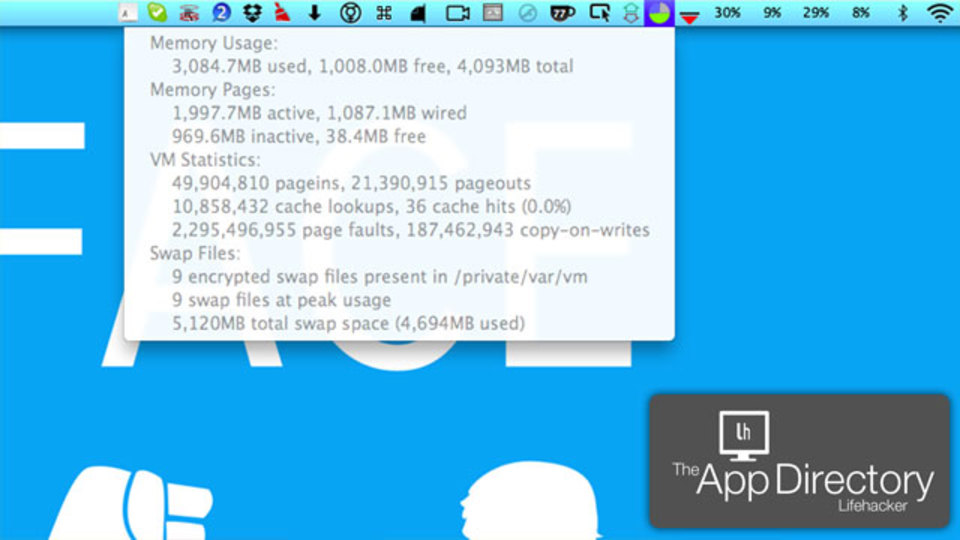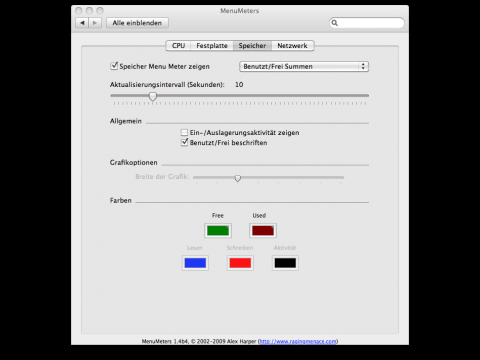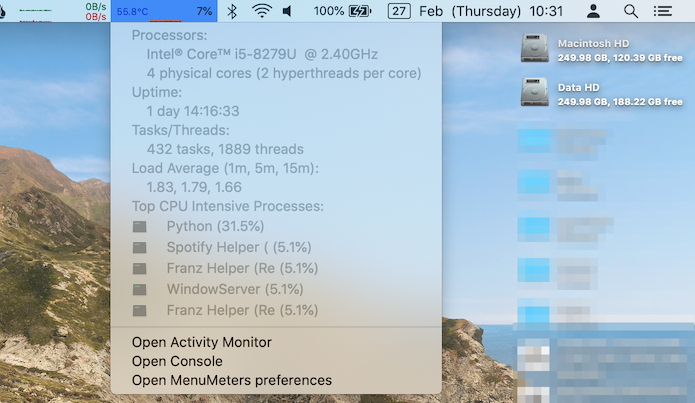

- Menumeters mac os install#
- Menumeters mac os zip file#
- Menumeters mac os pro#
- Menumeters mac os code#
- Menumeters mac os free#


One way of using this information is to wait for the CPU, disk and network activity to zero before shutting down the Mac. This is all valuable information and it tells you what you Mac is doing when there is nothing obvious happening on the screen. They show whether the disk is being written to or read from, how hard the processor cores are working, the internet transmit and receive speed when data is being downloaded or uploaded, and so on. The menu bar display indicators instantly tell you how hard the Mac is working behind the scenes. I selected lighter colours to make them easier to see with the dark theme. Select a colour at the bottom and it can be changed though. The defaults work fine with the traditional light macOS interface, but are too dark for the dark theme. The colours of each item in the menu bar can be changed.
Menumeters mac os pro#
Some of them require more menu bar space than is available on small screens and you might be forced to choose the most compact display options on a smaller MacBook for instance, but you can display more information on a MacBook Pro with a 15in screen and there is obviously more than enough menu bar space on an iMac with a big screen to choose any options you like. The other items, disk, memory and network, also have numerous display options. You can see two examples of these optional indicators in the screenshots above. For example, with the CPU indicator you can choose a percentage, a graph, a graph and percentage, a thermometer, a percentage and thermometer, a graph and thermometer, or graph, percentage and thermometer. Each of these is configurable and you can choose from several different display styles depending on how much information you want to see. MenuMeters adds up to four optional items to the menu bar: CPU, disk, memory and network. MenuMeters appears as an extra item at the bottom of the System Preferences window. I checked it out at the VirusTotal website, which is always recommended, and it was given a clean bill of health, so go ahead and click Open.Ĭonfigure the menu bar information display Click Install.īecause this file was not downloaded from the Mac App Store, a warning message is displayed.
Menumeters mac os install#
When given a choice of installing something for yourself or for all users, it is usually best to install it just for yourself. System Preferences opens and a message appears saying that it must be installed.
Menumeters mac os zip file#
Double click the zip file to extract it and a file called MenuMeters.prefPane appears. If you are running any recent version of macOS, go and get the new version of MenuMeters. The features have changed very little and it just works on Mojave now.
Menumeters mac os code#
I had to abandon it from El Capitan onwards, but someone has tweaked the code and made it compatible with modern versions of macOS, including Mojave. Here is it running on Mojave with the dark theme selected and a few of the optional features enabled in its settings.

It has a great display of resource usage in the menu bar. If you have a really old Mac running a very old version of OS X, then go ahead and get it. The original version of MenuMeters was compatible with OS X up to Mavericks and it did not work from from OS X 10.11 El Capitan onwards. Typically it uses around 0.6% CPU on my old Mac according to Activity Monitor. So little in fact, that you won’t notice it.
Menumeters mac os free#
One is that it is free and open source - how can you not like the price? The other is that is lightweight and uses very little memory or processing power. It is not the most comprehensive utility of its type and it does not have the most features, but there are a couple of reasons why you might prefer it to more modern alternatives. There are several apps that provide live system information indicators in the macOS menu bar, but an old favorite of mine is MenuMeters. You can see at a glance if the Mac is busy doing something. It is therefore useful to keep an eye on what it is doing and you can easily add activity monitors to the right side of the menu bar at the top of the screen that show CPU usage, memory used and free, internet or LAN activity, and disk usage. You just don't know what is happening behind the scenes. MacOS often works hard behind the scenes on a variety of tasks, but you would never know because rarely is any indication displayed on the screen. How soon after starting your Mac can you begin to use it? Is it slow to start up first thing in a morning? What is it doing?Īt the end of the day, is it OK to turn off or restart or is the Mac still doing important processing or disk tasks? See CPU, memory, internet and other stats. If your Mac is running slowly, you want to know why and adding MenuMeters to the menu bar enables you to monitor system resources at a glance.


 0 kommentar(er)
0 kommentar(er)
